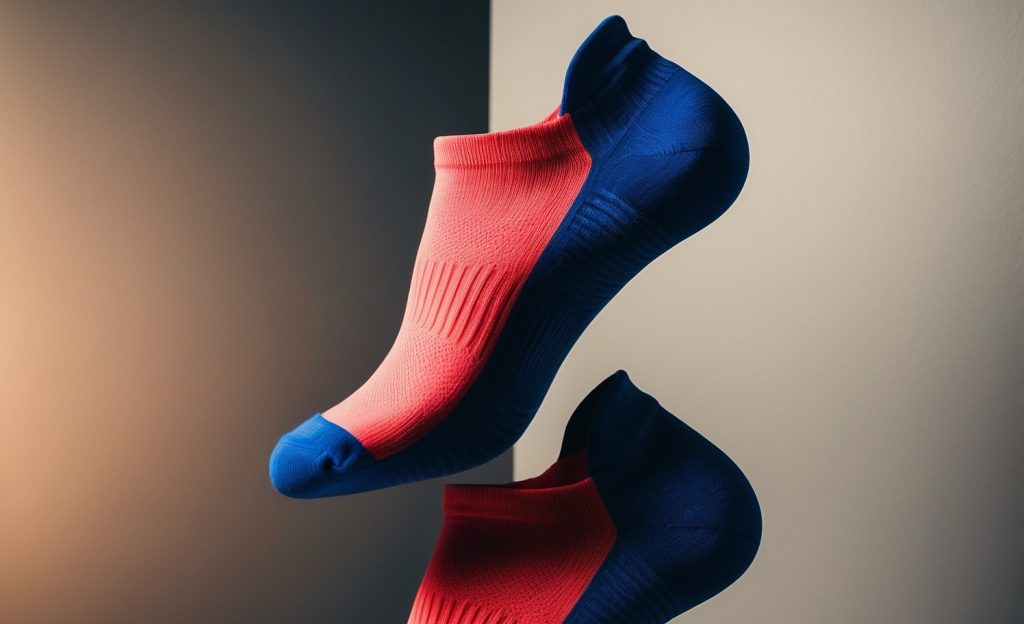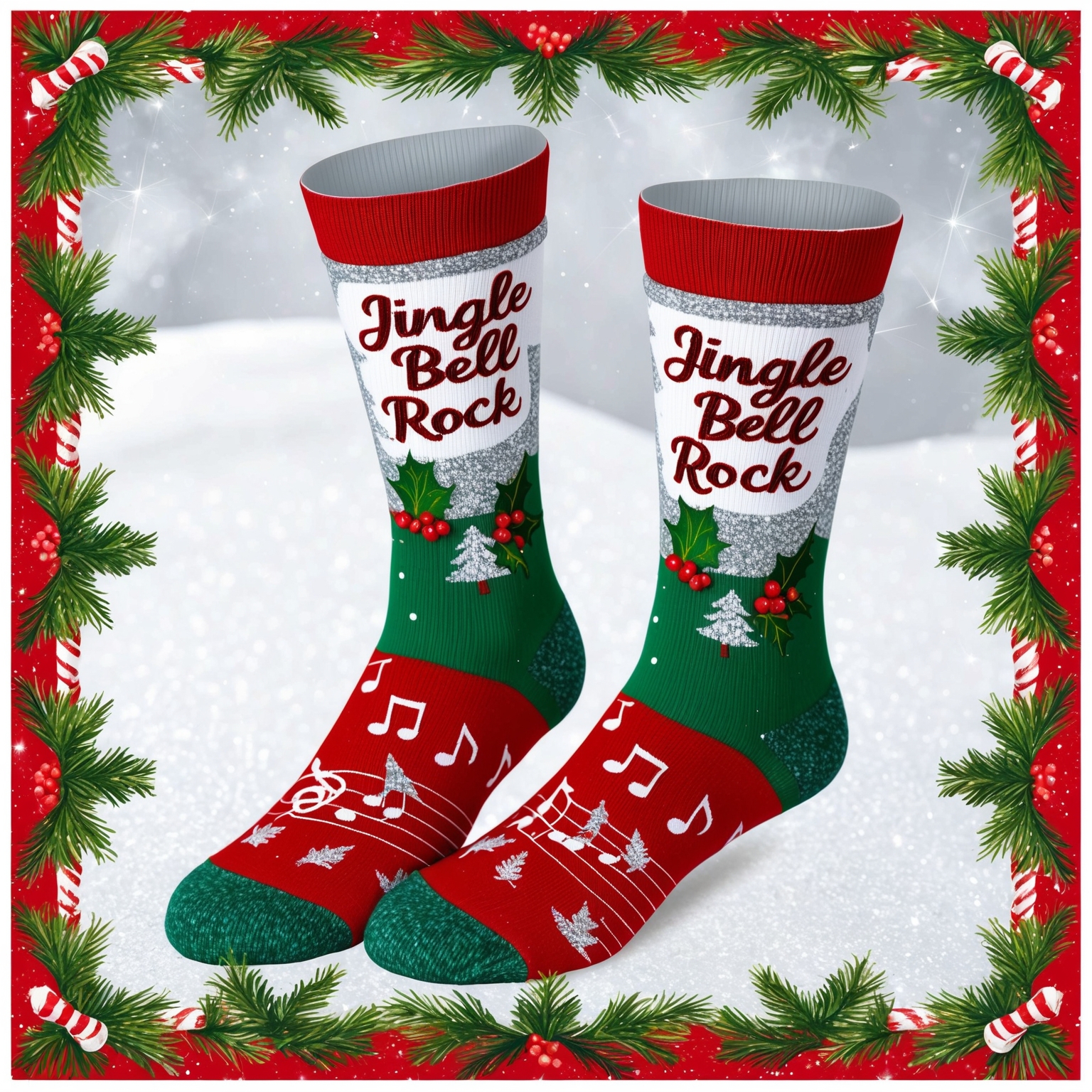When it comes to fitness, people tend to focus on key gear like shoes, workout apparel, or equipment, often overlooking one critical component of their performance: socks. Whether you’re running, cycling, weightlifting, or participating in your favorite sport, the right pair of socks can significantly impact your comfort, performance, and even your long-term foot health. That’s why choosing breathable socks should be an essential part of your workout wardrobe.
Breathable socks are specifically designed to keep your feet dry, cool, and comfortable, even during the most intense workouts. Made from moisture-wicking fabrics, these socks allow for proper airflow and reduce the risk of blisters, odor, and other issues that can arise from sweaty feet. In this article, we’ll explore why high-performance breathable socks are vital for every workout and how they can elevate your exercise routine.
From the benefits of breathability to understanding the materials and features that make socks high-performing, we’ll guide you through everything you need to know to ensure your next workout is supported by the perfect pair of socks.
1. The Importance of Breathability in Socks
Breathability is one of the most important qualities you should look for in workout gear, and your socks are no exception. When you’re engaged in any physical activity, your body temperature rises, leading to increased sweat production. If your feet are confined in non-breathable socks, moisture gets trapped, leading to discomfort, friction, and even long-term foot problems.
Why Breathability Matters:
- Moisture Control: Sweaty feet can cause discomfort, leading to blisters, hot spots, and fungal infections like athlete’s foot. Breathable socks wick away moisture, keeping your feet dry and reducing the risk of these issues.
- Temperature Regulation: When your feet get too hot, it can affect your overall performance. Breathable socks help regulate temperature, allowing air to flow and cooling your feet as you move.
- Odor Prevention: Sweat combined with bacteria trapped in non-breathable socks can lead to unpleasant odors. Breathable socks help reduce odor by minimizing moisture buildup and keeping bacteria at bay.
- Enhanced Comfort: Breathable socks ensure that your feet remain cool and dry, improving comfort and allowing you to focus on your workout instead of worrying about sweaty, uncomfortable feet.
Given how critical foot health is for overall fitness performance, breathability in socks is not just a luxury—it’s a necessity. Wearing breathable socks will protect your feet, reduce injury risk, and provide a more comfortable workout experience.
Example:
Imagine you’re in the middle of a long run on a hot summer day. Without breathable socks, your feet become drenched in sweat, creating friction between your skin and your shoes. This friction causes painful blisters, cutting your run short and forcing you to rest. Breathable socks could have prevented this by wicking away sweat and keeping your feet cool, allowing you to finish your run comfortably.
2. What Makes Socks Breathable? Understanding the Materials
The secret to breathable custom socks lies in the materials used to make them. Not all fabrics are created equal, and choosing the right materials will determine how well your socks can manage moisture, airflow, and temperature regulation. High-performance breathable socks often use a combination of natural and synthetic fibers to achieve optimal results.
Key Materials for Breathable Socks:
- Merino Wool: Merino wool is a natural fiber known for its moisture-wicking and temperature-regulating properties. Despite being wool, it’s incredibly lightweight and breathable, making it perfect for both hot and cold weather workouts. Merino wool socks can absorb moisture while still feeling dry to the touch, preventing sweat buildup and keeping your feet comfortable.
- Bamboo Fiber: Bamboo fiber is another natural material that offers excellent breathability and moisture management. It’s soft, durable, and naturally antibacterial, which helps prevent odors. Bamboo socks are also eco-friendly, making them a popular choice for environmentally conscious athletes.
- Synthetic Blends: Many breathable socks use synthetic fibers like polyester, nylon, and spandex in combination with natural materials. These fibers are designed to enhance the moisture-wicking and quick-drying properties of the socks. Synthetic blends also add elasticity, ensuring a snug fit that doesn’t bunch up or slip during exercise.
- Cotton (in Limited Quantities): While cotton is a natural fiber, it is not ideal for workout socks because it tends to retain moisture rather than wick it away. However, some high-performance socks incorporate small amounts of cotton for softness, combined with other breathable materials to manage moisture more effectively.
Choosing socks made from these high-performance materials ensures your feet stay dry and comfortable, no matter the intensity of your workout.
Example:
A runner might opt for a pair of merino wool socks for their morning jog. While wool might sound counterintuitive for a hot day, merino wool’s breathability ensures that sweat is wicked away, keeping the runner’s feet cool. In contrast, if they wore cotton socks, the sweat would likely soak in, leading to discomfort and overheating.
3. Moisture-Wicking Technology: The Key to Dry Feet
One of the standout features of high-performance breathable socks is their moisture-wicking technology. Moisture-wicking refers to the ability of the fabric to draw moisture (sweat) away from the skin and transfer it to the outer surface of the material, where it can evaporate.
How Moisture-Wicking Works:
- Absorption and Evaporation: Moisture-wicking fabrics pull moisture away from your skin and disperse it across a larger surface area. This accelerates evaporation, keeping your feet dry even during intense activities like running or cycling.
- Prevents Dampness: Non-wicking socks can trap sweat against your skin, leading to damp, clammy feet. This not only feels uncomfortable but also increases the risk of blisters and bacterial infections. Moisture-wicking socks help maintain a dry environment inside your shoes, reducing the risk of foot problems.
- Boosts Performance: Dry feet are not just about comfort—they’re crucial for maintaining your performance. When your feet are dry, you experience less friction, fewer distractions, and reduced chances of foot fatigue. This allows you to stay focused and push harder during your workout.
Example:
Consider a cyclist who embarks on a long ride in humid conditions. Without moisture-wicking socks, their feet would quickly become soaked in sweat, leading to discomfort and the potential for painful blisters. Breathable socks with moisture-wicking properties would keep their feet dry, preventing irritation and helping them maintain peak performance throughout the ride.
4. Blister Prevention: Protecting Your Feet from Friction
Blisters are a common and painful problem for anyone engaging in physical activity, and they are often caused by friction between the skin and damp fabric. One of the most important benefits of breathable socks is their ability to reduce the risk of blisters by managing moisture and providing a snug, yet comfortable fit.
How Breathable Socks Prevent Blisters:
- Moisture Control: Blisters form when your skin becomes damp and soft, creating more friction between your foot and your shoe. Breathable socks wick away moisture, keeping your skin dry and reducing the chances of blister-causing friction.
- Reduced Friction: High-performance socks are designed to fit snugly without bunching or slipping inside your shoes. This secure fit minimizes movement, which in turn reduces friction and the likelihood of blisters forming.
- Cushioning and Padding: Many breathable socks feature targeted padding in high-friction areas like the heel and ball of the foot. This extra cushioning provides protection where blisters are most likely to develop, ensuring your feet remain comfortable during long workouts.
Example:
A hiker setting out on a multi-day trek will face long hours of walking and various terrains. With non-breathable socks, the combination of sweat, heat, and friction can cause blisters to form, sidelining the hiker. High-performance breathable socks, with moisture-wicking and targeted padding, would keep their feet dry and comfortable, preventing blisters and allowing them to complete the trek without foot pain.
5. Odor Control: Keeping Feet Fresh During Workouts
Another major concern for active individuals is foot odor, which is primarily caused by bacteria thriving in moist, warm environments. The right pair of breathable socks can significantly reduce unpleasant odors, thanks to their moisture-wicking and odor-resistant properties.
Why Breathable Socks Help Control Odor:
- Bacteria and Moisture: When sweat accumulates in your shoes, it creates a perfect environment for bacteria to grow. These bacteria are responsible for the unpleasant odors associated with sweaty feet. Breathable socks keep your feet dry, reducing the moisture that bacteria need to thrive.
- Odor-Resistant Fabrics: Many high-performance breathable socks are made from materials with natural or synthetic odor-fighting properties. For example, merino wool is naturally antibacterial, which helps prevent odor even during long, sweaty workouts.
- Fresh Feet, Fresh Mind: Not only does controlling odor improve your overall comfort, but it also boosts your confidence, especially if you’re exercising in a group setting. There’s no need to worry about embarrassing foot odors when your socks are working to keep your feet fresh.
Example:
Imagine you’re attending a yoga class. As the class goes on, your feet begin to sweat, and without breathable socks, moisture builds up, creating an unpleasant odor. With the right pair of breathable socks, moisture is wicked away, and odor-fighting materials keep your feet feeling fresh, allowing you to focus on your practice without distraction.
6. Temperature Regulation: Keeping Your Feet Cool and Comfortable
Whether you’re working out in a hot gym or running in the winter cold, temperature regulation is essential for keeping your feet comfortable. Breathable socks help regulate temperature by allowing air to circulate, keeping your feet cool in the heat and warm in colder conditions.
How Breathable Socks Regulate Temperature:
- Airflow and Ventilation: Breathable socks are often designed with mesh panels or ventilation zones that promote airflow around your feet. This helps dissipate heat, keeping your feet cool during intense exercise.
- Insulation in Cold Weather: In addition to keeping your feet cool, breathable socks made from materials like merino wool can also provide insulation in colder temperatures. These socks wick away moisture while trapping warmth, keeping your feet comfortable and dry.
- All-Season Comfort: The best breathable socks are versatile enough to handle various weather conditions. They’ll keep your feet cool during a summer run and warm during a winter workout, making them an excellent year-round choice for active individuals.
Example:
A runner training outdoors in the winter might struggle with cold, damp feet if they wear regular cotton socks. Breathable socks made from merino wool would keep their feet dry by wicking away sweat, while the insulating properties of the wool would provide warmth, ensuring a comfortable run in chilly conditions.
7. Durability and Longevity: Investing in High-Quality Breathable Socks
While breathable socks offer numerous performance benefits, it’s also important to consider their durability. High-quality breathable socks are designed to withstand the wear and tear of regular workouts, providing long-lasting comfort and protection for your feet.
What to Look for in Durable Breathable Socks:
- Reinforced Areas: High-performance socks often feature reinforced heels and toes to prevent wear in the areas most prone to friction. This reinforcement ensures that your socks last longer, even after repeated use.
- Quality Stitching: Look for socks with strong, durable stitching. Poor-quality socks may develop holes or fray quickly, but well-made socks are designed to endure rigorous activity without falling apart.
- Shrink-Resistant Materials: Some socks shrink after washing, leading to a poor fit and reduced breathability. High-quality socks made from synthetic blends or merino wool are less likely to shrink, maintaining their shape and effectiveness over time.
- Elasticity for a Secure Fit: Breathable socks should retain their elasticity even after multiple washes. This ensures they continue to fit snugly and comfortably, preventing slipping or bunching during workouts.
Example:
A weightlifter who regularly engages in intense training sessions might wear out low-quality socks after just a few weeks. By investing in durable, high-performance breathable socks with reinforced heels and toes, they can rely on their socks to provide long-lasting comfort and support, even after months of heavy use.
8. Choosing the Right Pair for Your Workout: A Guide to Different Types of Breathable Socks
Not all workouts are the same, and neither are all custom breathable socks. Depending on the type of activity you engage in, certain features and designs will be more beneficial than others. Here’s how to choose the right pair of breathable socks for different types of workouts.
Best Breathable Socks for Running:
- Cushioned Soles: Running socks should have extra cushioning in the sole to absorb impact and reduce the risk of injury.
- Ankle or Crew Length: For runners, ankle-length socks are popular as they provide protection without too much bulk. Crew-length socks offer more coverage and are useful for trail runners who need protection from debris.
- Mesh Ventilation: Look for socks with mesh ventilation panels to keep your feet cool during long runs.
Best Breathable Socks for Weightlifting:
- Compression Fit: Compression socks offer better support and circulation during weightlifting, helping reduce muscle fatigue.
- Durable Fabric: Choose socks made from durable materials with reinforced heels and toes to withstand the pressure of lifting.
- Moisture-Wicking: As with any workout, moisture control is essential for keeping your feet dry and reducing the risk of slipping during lifts.
Best Breathable Socks for Hiking:
- Extra Padding: Hiking socks should offer additional padding in the heels and toes for comfort on long treks.
- Merino Wool: For breathability and temperature regulation, merino wool hiking socks are an excellent choice, keeping your feet dry in various weather conditions.
- Crew or Knee-Length: Choose longer socks that provide protection against the elements and prevent debris from getting into your boots.
Example:
A triathlete training for an event would benefit from different types of breathable socks for each part of the race. For the cycling portion, compression socks with moisture-wicking technology would help with circulation and keep their feet dry. For the running segment, cushioned socks with mesh ventilation would offer the breathability and comfort needed for the long run.
9. Maintaining and Caring for Your Breathable Socks
To get the most out of your breathable socks and ensure they last, it’s essential to care for them properly. Washing and storing your socks correctly can help maintain their moisture-wicking properties, elasticity, and overall performance.
Tips for Proper Sock Care:
- Follow Care Instructions: Always check the manufacturer’s care instructions on the label. Some socks may require hand washing or air drying to prevent shrinking or damage to the fibers.
- Avoid Harsh Detergents: Use mild detergents that won’t damage the sock’s moisture-wicking properties or the elasticity of the fabric.
- Air Dry Whenever Possible: Avoid using high heat when drying your socks, as it can weaken the fabric and cause shrinkage. Air drying is the best way to maintain their shape and durability.
- Store in a Dry Place: Keep your socks in a cool, dry place to prevent moisture buildup and bacterial growth. Avoid storing damp socks in gym bags, as this can lead to odor and wear.
By taking good care of your breathable socks, you can extend their lifespan and ensure they continue to support your workout routine for months to come.
Example:
After a long day of hiking, a hiker carefully washes their merino wool socks by hand with a mild detergent and allows them to air dry. By following proper care instructions, the socks retain their breathability and durability for future hikes.
Elevate Your Workout with Breathable Socks
When it comes to optimizing your workout, every detail matters, and breathable socks play a critical role in your overall comfort and performance. By keeping your feet dry, cool, and protected, these high-performance socks help prevent blisters, manage odor, regulate temperature, and support your feet through every activity. Whether you’re running a marathon, lifting weights, or going for a hike, investing in the right pair of breathable socks can make all the difference.
From understanding the importance of moisture-wicking materials to choosing the right socks for specific activities, this guide has covered everything you need to know about breathable socks and their benefits. With the right pair of socks on your feet, you’ll be able to breathe easy and focus on achieving your fitness goals, one step at a time.
If you are interested in purchasing high-quality custom socks, feel free to contact us at 1-877-912-6410 or fill out a FREE QUOTE FORM.



